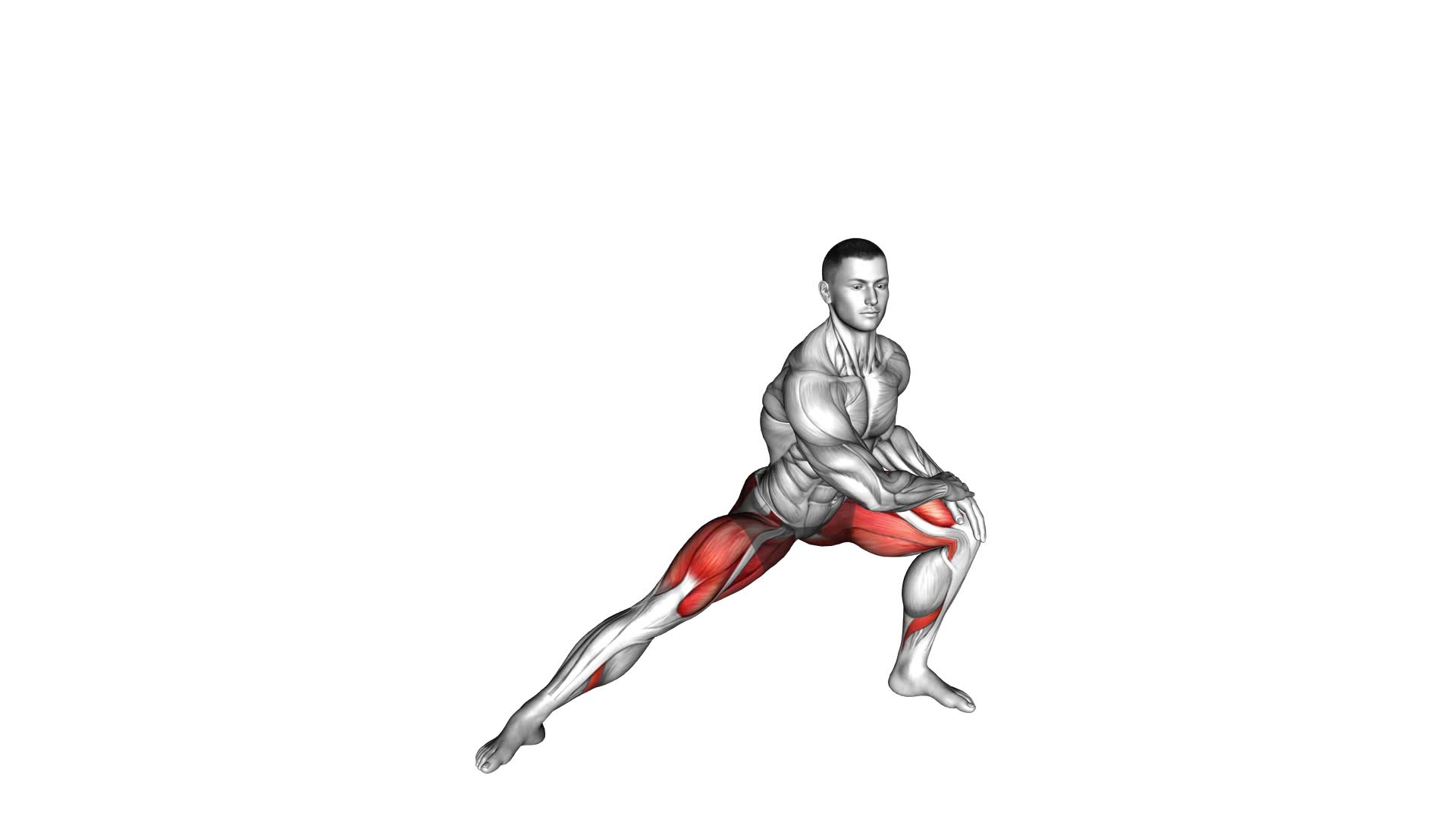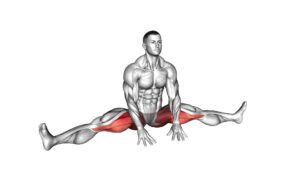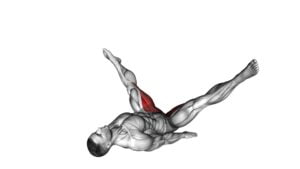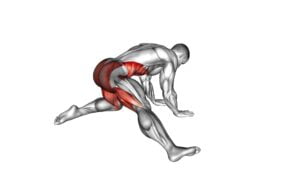Side Lunge Adductor Stretch – Video Exercise Guide & Tips

Are you looking to improve your flexibility and strengthen your adductor muscles? Then the Side Lunge Adductor Stretch is the perfect exercise for you!
Watch This Exercise Video
In this video exercise guide, we will show you the proper form and technique to perform this stretch effectively.
You'll also learn about common mistakes to avoid, variations and modifications, and tips for maximum effectiveness.
Get ready to take your fitness routine to the next level with this powerful stretch.
Key Takeaways
- Improves flexibility in the groin area
- Prevents groin injuries
- Targets the adductor muscles
- Increases range of motion in the hips and groin
Benefits of the Side Lunge Adductor Stretch
Improve flexibility and prevent injury with the Side Lunge Adductor Stretch. This exercise is highly effective in improving flexibility in the groin area while also preventing groin injuries. The Side Lunge Adductor Stretch targets the adductor muscles, which are responsible for bringing the legs together.
By regularly performing this stretch, you can increase the range of motion in your hips and groin, allowing for better movement and reducing the risk of strains or tears.
The Side Lunge Adductor Stretch works by stretching the inner thigh muscles, specifically the adductor longus, adductor magnus, and adductor brevis. These muscles are often neglected in traditional stretching routines, but they play a crucial role in maintaining proper hip alignment and stability. By incorporating this stretch into your routine, you not only improve flexibility but also enhance your overall athletic performance.
To perform the Side Lunge Adductor Stretch properly, start by standing with your feet shoulder-width apart. Take a wide step to the side with your right foot, keeping your left foot firmly planted on the ground. Bend your right knee and lower your body into a lunge position, ensuring that your right knee doesn't extend past your toes. Hold this position for 20-30 seconds, feeling the stretch in your inner thigh. Repeat on the other side.
By incorporating the Side Lunge Adductor Stretch into your routine, you can improve flexibility in the groin area and prevent groin injuries.
Next, we'll discuss the proper form and technique for performing this stretch.
Proper Form and Technique
To execute the Side Lunge Adductor Stretch with proper form and technique, focus on maintaining stability and engaging your adductor muscles. Here are three key points to keep in mind:
- Stance:
- Begin by standing with your feet shoulder-width apart.
- Take a wide step to the side with your right foot, keeping your toes pointed forward.
- Your left foot should remain planted on the ground, with your toes slightly turned out.
- Alignment:
- As you lunge to the side, shift your body weight onto your right leg.
- Bend your knee and lower your hips towards the ground.
- Keep your back straight and your chest lifted to maintain proper alignment.
- Stretching the adductors:
- As you lower into the lunge, you'll feel a stretch in your inner thigh and groin area of the right leg.
- Hold this position for 20-30 seconds, focusing on breathing deeply and relaxing into the stretch.
Common Mistakes to Avoid
To avoid common mistakes, focus on maintaining stability and engaging your adductor muscles during the Side Lunge Adductor Stretch.
One of the most common mistakes people make isn't maintaining proper alignment throughout the exercise. It's crucial to keep your back straight and your chest lifted. Avoid rounding your shoulders or hunching forward, as this can put unnecessary strain on your back and compromise the effectiveness of the stretch.
Another common mistake isn't engaging the adductor muscles properly. To engage these muscles, imagine squeezing your inner thighs together as you lower into the side lunge position. This will help activate the adductors and deepen the stretch.
It's also important to avoid letting your knees collapse inward during the stretch. Keep your knees in line with your toes to maintain proper alignment and prevent any strain on the knee joints.
Variations and Modifications
To explore different ways to modify and vary the Side Lunge Adductor Stretch, you can incorporate equipment such as resistance bands or dumbbells. These variations and modifications can help you target your adductor muscles in different ways and challenge your body in new and exciting ways. Here are three options to consider:
- Resistance Band Side Lunge: Attach a resistance band around your ankles or just above your knees. As you perform the side lunge, the resistance from the band will add an extra challenge to your adductor muscles, helping to strengthen and stretch them even further.
- Dumbbell Side Lunge: Hold a dumbbell in each hand and keep them by your sides as you perform the side lunge. The additional weight will engage your muscles more intensely and increase the difficulty of the exercise.
- Advanced Side Lunge Stretch: Once you have mastered the basic side lunge adductor stretch, you can progress to more advanced variations. One option is to perform the stretch on an unstable surface, like a Bosu ball or a wobble board, to further challenge your balance and stability.
Tips for Maximum Effectiveness
To maximize the effectiveness of the Side Lunge Adductor Stretch, focus on maintaining proper form and engaging your adductor muscles throughout the exercise. This will ensure that you're targeting the right muscles and getting the most out of your stretch.
However, it's important to take some precautions and safety measures to avoid any injuries. Firstly, make sure to warm up your body before attempting this stretch. This will help to increase blood flow and flexibility, reducing the risk of strains or pulls.
Secondly, start with a comfortable range of motion and gradually increase it over time. Pushing yourself too far too soon can lead to overstretching and potential injury.
Lastly, listen to your body and stop if you feel any sharp or intense pain.
Incorporating the Side Lunge Adductor Stretch into a full body workout routine can be beneficial for overall flexibility and strength. This stretch targets the adductor muscles of the inner thighs, which are essential for movements such as lunges, squats, and even running.
By regularly incorporating this stretch into your routine, you can improve your range of motion and prevent muscle imbalances. It's recommended to perform this stretch after a workout when your muscles are warm and more pliable. Remember to hold the stretch for about 30 seconds on each side and repeat it two to three times.
As with any exercise, consistency is key for seeing results. So, make sure to make this stretch a regular part of your fitness routine for maximum effectiveness.
Frequently Asked Questions
How Long Should I Hold the Side Lunge Adductor Stretch?
When doing the side lunge adductor stretch, it's important to hold the stretch for an adequate amount of time to reap the benefits. The duration of the stretch will depend on your comfort level and flexibility.
Generally, holding the stretch for 15-30 seconds on each side is a good starting point. This stretch helps to improve flexibility in your adductor muscles, which can enhance your overall range of motion and prevent injury.
There are also variations of this stretch that you can explore to target different areas of your adductors.
Can I Perform the Side Lunge Adductor Stretch if I Have Knee Pain?
If you're experiencing knee pain, it's important to modify the side lunge adductor stretch to avoid further injury. Instead, try alternative stretches that target the adductor muscles without putting stress on your knees.
Consult with a professional to determine the best options for you. It's crucial to listen to your body and prioritize your safety when it comes to exercising with pain or discomfort.
Is It Necessary to Warm up Before Doing the Side Lunge Adductor Stretch?
Before performing the side lunge adductor stretch, it's highly recommended to warm up your muscles. This helps to increase blood flow, improve flexibility, and reduce the risk of injury. Warming up can be as simple as jogging in place or doing some light cardio exercises.
As for variations of the side lunge adductor stretch, you can try using a resistance band or adding a twist at the end to engage your core muscles.
Can I Do the Side Lunge Adductor Stretch if I Have a Hip Injury?
If you have a hip injury, it's important to consult with a healthcare professional before attempting the side lunge adductor stretch. They can provide guidance on whether it's safe for you to do this exercise and may suggest modifications that can help protect your hip during the stretch.
It's always better to err on the side of caution and prioritize your injury recovery over pushing through potentially harmful movements.
How Often Should I Incorporate the Side Lunge Adductor Stretch Into My Exercise Routine?
To get the most out of the side lunge adductor stretch, it's important to know how often to incorporate it into your routine.
The frequency recommendations for this stretch vary depending on your fitness level and goals. However, generally speaking, doing this stretch 2-3 times per week is a good starting point.
Conclusion
Incorporating the side lunge adductor stretch into your exercise routine can offer numerous benefits, such as increased flexibility and improved hip mobility.
By maintaining proper form and avoiding common mistakes, you can maximize the effectiveness of this stretch.
Additionally, variations and modifications can be implemented to cater to individual needs and fitness levels.
Remember to follow these tips to ensure you're achieving the maximum benefits from this stretch.

Author
Years ago, the spark of my life’s passion ignited in my mind the moment I stepped into the local gym for the first time. The inaugural bead of perspiration, the initial endeavor, the very first surge of endorphins, and a sense of pride that washed over me post-workout marked the beginning of my deep-seated interest in strength sports, fitness, and sports nutrition. This very curiosity blossomed rapidly into a profound fascination, propelling me to earn a Master’s degree in Physical Education from the Academy of Physical Education in Krakow, followed by a Sports Manager diploma from the Jagiellonian University. My journey of growth led me to gain more specialized qualifications, such as being a certified personal trainer with a focus on sports dietetics, a lifeguard, and an instructor for wellness and corrective gymnastics. Theoretical knowledge paired seamlessly with practical experience, reinforcing my belief that the transformation of individuals under my guidance was also a reflection of my personal growth. This belief holds true even today. Each day, I strive to push the boundaries and explore new realms. These realms gently elevate me to greater heights. The unique combination of passion for my field and the continuous quest for growth fuels my drive to break new ground.







